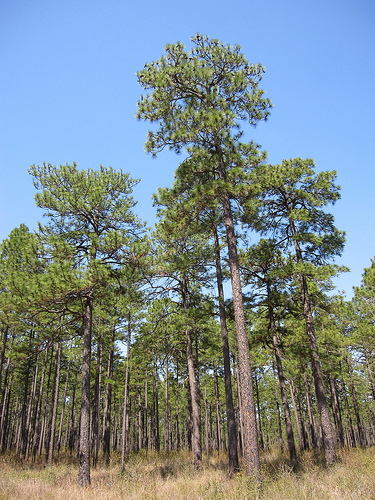By Katrina Marland

With the amount of coverage it receives (and rightfully so) in the media, you probably think that climate change is the single greatest threat to forests. And while it certainly is a serious threat to the stability and survival of all ecosystems, recent research shows that there’s another problem facing forests today that may be just as serious: biodiversity loss.
An ecosystem’s biodiversity is the variety of living things within it. Because only healthy, stable ecosystems can support a great variety of species, biodiversity is generally considered a key indicator of what condition the ecosystem is in. But it works the other way, too. For instance, when a forest loses some of its species, it creates gaps in the food web, and a ripple effect can be felt throughout the entire ecosystem. But just how bad can the consequences of biodiversity loss get?
A team of researchers from nine institutions across the U.S., Canada and Sweden recently published a study that details how extensively the loss of biodiversity of plant species can affect an ecosystem and how that impact compares to those expected from climate change. The team used published data from 192 different experiments to gage how various environmental factors affect two of the most basic processes of all types of ecosystems: plant growth and decomposition. From there, they could determine the scale of the effects on the ecosystem as a whole.
What the researchers found was that in places where species loss is higher, we could see the same scale of effects that we see from climate change. Just as droughts, fires and diseases are changing landscapes around the world, loss of biodiversity can have the same kind of ecosystem-altering effect. When loss of species starts to interfere with the rate of plant growth or decomposition, the domino effect can change the entire ecosystem from the bottom up. The study also determined that in more drastic cases, where 41 to 60 percent of species are driven extinct, the effects can be just as damaging as those from acid rain or nutrient pollution, which can devastate an ecosystem.
Extinctions, even on a massive scale, have happened historically. But today, the rate at which Earth is losing species is a lot higher. Urban development, hunting, pollution and other factors have made it all too easy for the planet to lose species much faster than it is used to. The scary thing is that for the widespread effects talked about in this study to occur, species don’t have to go globally extinct — they just have to be wiped out of an area they once populated, and sadly enough, that happens rather often. If we want to avoid the potential fallout from losing species, we’re going to have to work harder to keep them.
